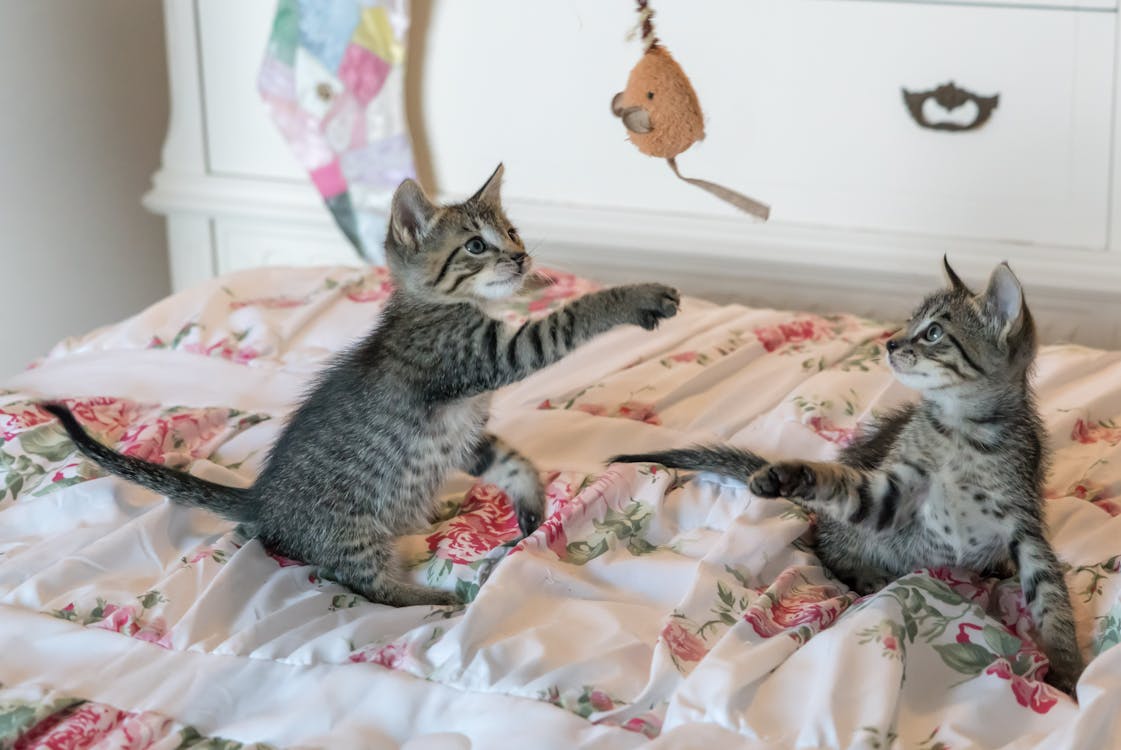Even if you don’t have your own cat, you’ve probably shared your home with one before – whether you were a pet-sitter or just house-sat to keep an eye on the cats of an out-of-town friend or family member. You know the havoc cats can wreak if left to their own devices, so if you want to welcome another cat into your home, here are 10 tips to train your cat so that it will be the perfect houseguest and not leave claw marks all over your furniture!
1) Feed the kitty in a specific place

Feeding your cat in a specific place will help him or her learn that this spot is where food is supposed to go. As long as you’re consistent, your cat will eventually find this feeding spot on his or her own. Make sure that there’s nothing else in the room when you set up the feeding station. This way, your cat can’t be distracted by other cats and squirrels outside of the window, for example, and he’ll focus on finding his food source instead.
2) Create boundaries
Set up boundaries and rules for your cat with a few simple steps. Establish what area is safe for them to explore, and when they should be inside or outside. For example, if you want your cat inside during the day but outside at night, make sure they know when it’s time to come in so they aren’t caught off guard.
3) Play with the kitten often

Playing with your cat regularly is a great way to keep him stimulated and provide opportunities for him to use his natural hunting instincts. Interactive toys, such as feather wands, laser pointers, and toy mice on strings can all help your feline friend stay entertained. These toys are also a great way for you to bond with your cat by playing together and giving each other quality time!
4) Give it something to do while you are gone
Set up a room in your house where your cat can have some alone time. This could be a spare bedroom or an enclosed laundry room. Fill it with lots of fun things for your cat to do while you’re away, like a window that they can watch birds through or a scratching post they can use while they are waiting for you.
5) Use toys to keep them occupied

Keep them occupied with a variety of toys so they always have something new to play with. This will also help you avoid having too many useless objects lying around your house. Cats are natural hunters and enjoy stalking prey, so it’s important that you provide them with toys that allow them to do this. You can find many varieties of cat toys at pet stores or even at your local dollar store!
6) Set up scratching posts
This may seem like a no-brainer, but it’s worth mentioning. Cats need a place they can scratch their claws on when they want to mark territory or let off some pent-up energy. The post should be tall enough for your cat to get both paws on it and wide enough that there are ample surfaces for scratching. You can also add carpeting, mats, or cardboard on top of the post as well.
7) Keep interactive play separate from sleeping time

If you want a well-behaved cat, it’s important to establish boundaries. Interactive play should be kept separate from sleeping time and meals. Cats naturally sleep 16 hours per day and they need plenty of rest.
8) Provide plenty of vertical space for jumping and climbing
A cat tower is a great way to give your feline friend their own space and will make them feel like they are in charge of their home. They can climb, jump, and scratch any surface they want. This will allow them to get all of their energy out so that they are ready for a nap on your lap later.
9) Take it outside often (with supervision!)

It’s important for cats to be active and stimulated, so take it outside for a walk on a leash or let it explore an outdoor space with supervision. This will not only provide your cat with exercise, but also enrich its environment, which is important for preventing boredom behaviors like tearing up furniture.
10) Teach it no with words only, never with hands or objects
- Keep your cat on a schedule for feeding, playtime and bathroom time.
- Give your cat a designated area for sleeping or playing with toys.
- Make sure you have enough litter boxes in the house so that each one is used by no more than one cat at a time.
- If you have more than one cat, make sure they get along well before bringing them into your home together.
